| Home | Nature Weekly Index |
23 April 2017 | Fringed Spider Flower | Cleome rutidosperma |
The pot with 4 stem-cuttings of the Magenta Plant (Peristrophe bivalvis) which I planted last month was now packed with an exotic weed, Fringed Spider Flower (Cleome rutidosperma). Its seeds must have come from the recycled soil that was once used to grow a Pandan (Pandanus amaryllifolius) for over 7 years. Fringed Spider Flower is a very common weedy herb here. A lot of information on it is available in the Internet.
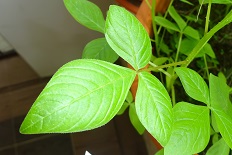
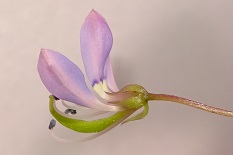
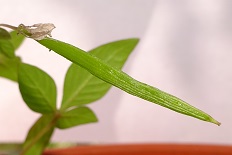
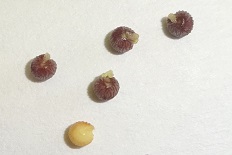
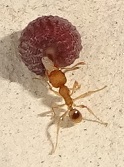
 Of the wealth of information available, two pieces caught my attention. The first one was the dispersion of the seeds by
ants. When I was a kid, I used to peel open its elogated capsules to release the small seeds and watch them being carried
away by ants. In order to take some pictures of the ants ferrying the seeds, I took a matured capsule and release the seeds
on an opened area at the balcony. Sure enough, the resident ants
(Pheidole parva) came along and start moving the seeds
toward their nest and I got my pictures. Ants are attracted by the fleshy structures attached to the seeds known as
elaiosomes. Based on the sudden bloom of this weedy herb and the history of the soil, some ants must have stored a large
quantity of these seeds over a period of time. The seeds probably remained dormant all this while until the condition
turned favourable recently with the re-used the old soil.
Of the wealth of information available, two pieces caught my attention. The first one was the dispersion of the seeds by
ants. When I was a kid, I used to peel open its elogated capsules to release the small seeds and watch them being carried
away by ants. In order to take some pictures of the ants ferrying the seeds, I took a matured capsule and release the seeds
on an opened area at the balcony. Sure enough, the resident ants
(Pheidole parva) came along and start moving the seeds
toward their nest and I got my pictures. Ants are attracted by the fleshy structures attached to the seeds known as
elaiosomes. Based on the sudden bloom of this weedy herb and the history of the soil, some ants must have stored a large
quantity of these seeds over a period of time. The seeds probably remained dormant all this while until the condition
turned favourable recently with the re-used the old soil.
The other piece of information that gripped my attention was its relationship with the diamondback moth (Plutella xylostella). It was reported in Malaysia that this weedy herb was planted around crop-fields to help to divert pest caterpillars of this moth [1].
The herb was once classified under the family Capparaceae. Later, when DNA evidence suggested that the genus is more closely related to the family Brassicaceae, it was raised to a distinct family Cleomaceae. Although the fruit might look like a seed pod from the legume family (Fabaceae), it is actually classified as a capsule. Capsules may be pod-like.
Reference:
[1] Idris AB, Selvi C. The potential role of Cleome rutidosperma D.C. and Brassica juncea L. (Indian mustard) in Resistance Management of Diamondback Moth, Plutella xylostella (L.), in Malaysia. Resistant Pest Management 1997;9(2):29-32.